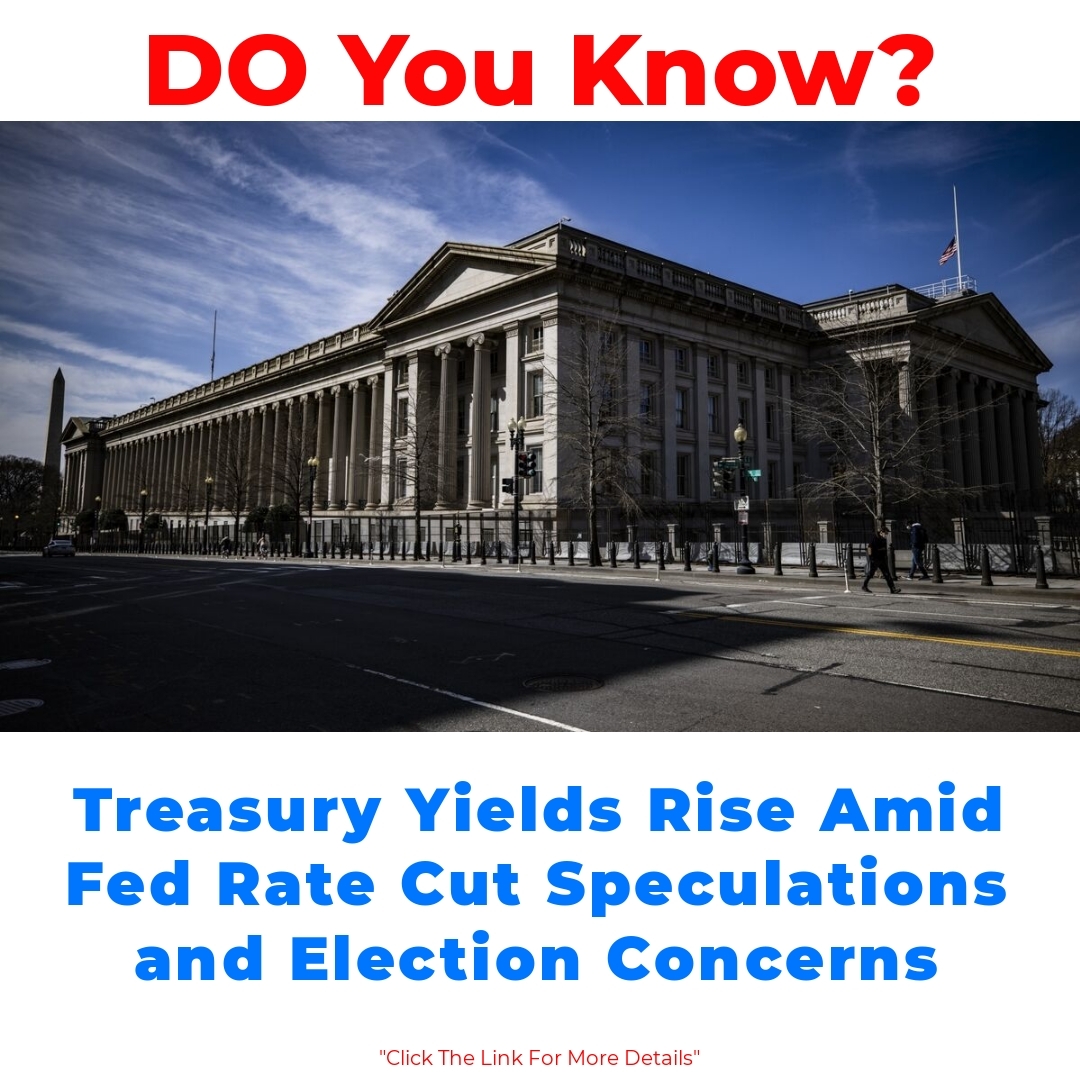Treasury yields represent the returns on government bonds and are crucial in shaping financial market trends. Recently, they’ve surged for the third consecutive day, reflecting heightened expectations around Federal Reserve interest rate adjustments and concerns stemming from the upcoming US presidential election. This article will delve into these interconnected dynamics.


Treasury yields are integral to the financial markets, serving as a reflection of investor confidence and economic health. Recently, we’ve witnessed these yields climbing for the third consecutive day. This upward trend is largely influenced by the expectations surrounding Federal Reserve interest rate changes and growing concerns tied to the upcoming US presidential election.
Understanding Treasury Yields
Treasury yields represent the return on investment for U.S. government bonds. These yields are influenced by various factors, including demand for bonds, inflation expectations, and the overall economic landscape. As investors seek safety, they flock to Treasury bonds, which in turn affects the yield rates. Higher demand typically drives yields down, while reduced demand raises them.
Moreover, Treasury yields are closely linked to essential economic indicators such as employment rates and inflation. For instance, when inflation rises, yields often follow suit as investors adjust their expectations. In this context, it’s crucial to understand the monetary policy and economic outlook since they set the stage for the ongoing fluctuations in Treasury yields.
The Role of the Federal Reserve
The Federal Reserve plays a significant role in determining interest rates, which directly impacts Treasury yields. As the central bank shifts its policies, traders react, often adjusting their positions based on perceived changes in monetary policy. Recently, many traders have expressed sentiment regarding possible interest rate cuts, leading to speculation about how these adjustments might influence Treasury yields.
For example, when the Fed previously reduced interest rates in 2020, we saw a corresponding decrease in Treasury yields. Such historical examples show just how interconnected the Federal Reserve’s decisions and Treasury yields can be, highlighting the importance of understanding the impact of Federal Reserve decisions on Treasury yields.
Inflation and Its Implications
Current inflation trends are another critical factor affecting Treasury yields. Many investors watch these trends closely because inflation expectations can guide trader sentiment significantly. If investors believe inflation will rise, they may demand higher yields to compensate for the decreased purchasing power of future cash flows.
This relationship between Treasury yields and inflation expectations cannot be overlooked. For instance, if inflation data suggests a spiraling cost of living, we could see Treasury yields increase as investors seek to adjust their portfolios in response to those inflationary pressures. Understanding how these dynamics play out is essential for anyone participating in the financial markets.
The Impact of the US Presidential Election on Financial Markets
The upcoming US presidential election adds another layer of complexity to the financial landscape. Elections often stir uncertainty regarding economic policies, which can lead to volatility in the markets. For instance, traders may become apprehensive about potential inflationary implications of candidates’ proposed policies, influencing their trading strategies significantly.
This raises the question of how the US presidential election affects interest rates. Depending on the elected administration’s stance on fiscal policies, we may see shifts in strategies that either fuel or temper inflation, directly impacting Treasury yields. Understanding these correlations can help investors anticipate changes and make informed decisions.
The Gradual Approach to Interest Rate Cuts
The Federal Reserve has adopted a gradual approach to interest rate cuts, which resonates through the financial sphere, particularly concerning Treasury yields. A steady reduction in interest rates does not typically result in an immediate reaction in Treasury yields, as the market often requires time to absorb the implications of these moves.
This measured strategy impacts not just Treasury yields but broader financial markets as well. Analysts predict that a gradual easing of rates will likely keep yields stable, encouraging investment without triggering unnecessary volatility. Exploring the gradual interest rate cuts by the Federal Reserve provides valuable insight into future economic trends and behaviors in the financial markets.
Conclusion
In summary, the relationship between Treasury yields, Federal Reserve expectations, inflation, and the US presidential election creates a complex but fascinating picture of our financial landscape. As Treasury yields climb amidst these evolving dynamics, understanding their implications will be crucial for making informed investment decisions. Keeping an eye on these factors will be vital, especially as we look towards future trends in interest rates and their subsequent effects on Treasury yields.
What are Treasury yields?
Treasury yields are the returns on investment for U.S. government bonds. They reflect the interest rate investors earn when they buy these bonds. Various factors, like demand and inflation expectations, influence these yields.
How do Treasury yields relate to the economy?
Treasury yields are closely connected to key economic indicators such as employment rates and inflation. For instance, rising inflation usually leads to higher yields as investors seek compensation for decreased purchasing power.
What role does the Federal Reserve play in Treasury yields?
The Federal Reserve significantly impacts interest rates, which directly affects Treasury yields. As the Fed changes its policies or signals future moves, traders adjust their positions, leading to fluctuation in yields.
How does inflation affect Treasury yields?
Inflation plays a vital role in shaping Treasury yields. If investors expect inflation to rise, they may require higher yields to offset the loss of purchasing power, influencing their trading strategies and decisions.
How does the US presidential election impact Treasury yields?
The upcoming presidential election can create uncertainty in the markets. Candidates’ proposed economic policies may influence inflation fears and lead to volatility in Treasury yields as investors react to anticipated changes.
What is the Federal Reserve’s approach to interest rate cuts?
The Federal Reserve has taken a gradual approach to interest rate cuts. This method impacts Treasury yields over time, as the market needs time to process the effects of these adjustments.
Why is it important to monitor Treasury yields?
Monitoring Treasury yields is crucial for understanding the financial markets. Changes in yields can indicate investor sentiment, economic outlook, and potential shifts in monetary policy, all of which are vital for making informed investment decisions.





